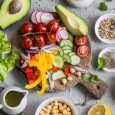Exercise Physiology Basics
Reaching a decision to get back in shape and take charge of your body is a great step forward to health. Exercise and fitness builds self-confidence and esteem. Before jumping into at the deep end of a fitness regimen, it is important to understand the basics of exercise physiology and how the human body works.
The Anaerobic System (ATP)
The anaerobic system (ATP) is the body’s way of using the needed Adenosine Triphosphate that flows through all cells. This Adenosine Triphosphate is a fast and quick energy source that gives the first boost of power. Adenosine Triphosphate gets burned quickly in the body, requiring the Phosphocreatine System, Lactic Acid System and Aerobic System to work on replenishing the ATP. What this boils down to is that in order to begin building your fitness levels, you need to train the body to produce the ATP once burned.
The Phosphocreatine System (Anaerobic) is the system that gives the body the fastest way of replenishing needed ATP. To engage this system, the body needs a source of carbohydrates and sugars. This is where healthy diet choices and proper caloric intake plays a role in successful exercise regimens.
The Lactic Acid System is the runner-up in ATP production. When the lactic acid system can no longer produce the needed quantities of ATP, muscles begin to cramp and become heavy and painful.
Aerobic System
Fat gets burned through the body’s aerobic system, and only through the aerobic system. The aerobic system is the slow-burn and endurance system in the body. For basic exercise physiology, think of the aerobic system as the engine that powers the body for activities such as running, cycling, walking or other endurance sports. When the body uses the aerobic system, fat gets burned to provide glucose to keep the system running. As the body becomes used to using the aerobic system, and burning fat, it becomes efficient in the burn, resulting in low body-fat percentages and trim tones.
In order for any system to function it needs fuel. This is where calorie count and the quality of the food comes into play. It is important to understand goals for fitness. For example, someone wanting to build muscle and tone needs a higher protein intake than someone wishing to run a marathon. Carbohydrates and simple sugars such as those found in grains and legumes help power endurance systems like the aerobic system. Proteins help build mass while engaging anaerobic functions in the body.
Without proper fluid intake, the body’s systems do not function. That is why water and electrolyte consumption is crucial to exercise physiology and success in any fitness program.
Exercise Physiology Guides











